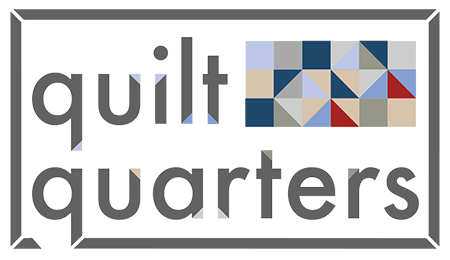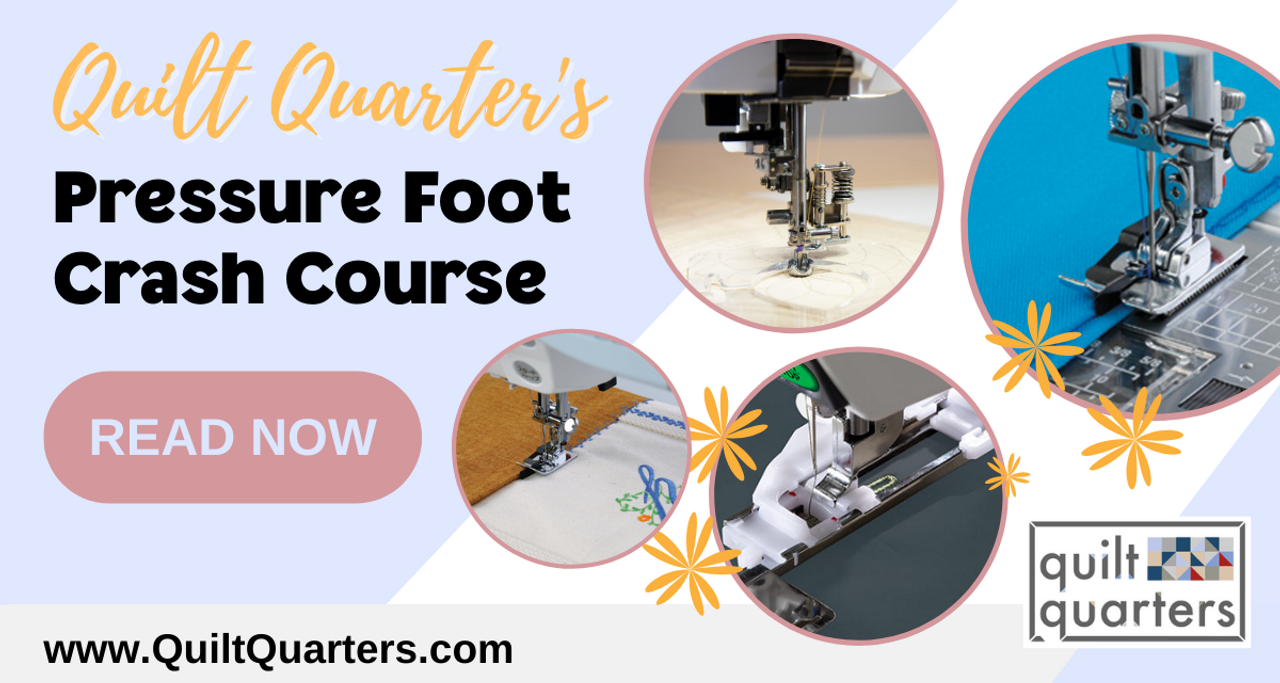When starting out your journey in the realm of fabrics, machines, techniques, and the like, it's easy to get lost. Especially when there are so many little details that make distinguishing between one thing and another rather niche, Quilt Quarters is the one-stop quilting and sewing shop for all the materials and information you could need.
One of those "little detail, big difference" facets of sewing and quilting is the presser foot. Just a small part of most sewing and quilting machines, this little gadget has the potential to make your project the easiest one yet or just not quite right.
Here's our crash course on 5 popular presser feet!
The Standard Zig-Zag Foot
This presser foot is normally included with machines, and for good reason! Especially for beginners, it might be the only presser foot you need, with the ability to complete straight stitches, zig-zag stitches, decorative stitches, overcasting stitches, and satin stitches.
The only jam you may run into is this foot's proclivity for getting certain types of materials and fabrics stuck - and that's when you move to a different foot!
The Quilting Foot
As you might gather from the name, the quilting foot is used mainly for - wait for it - quilting! This foot does it's job by holding all the components and layers of a quilt in place while they are fed evenly through the machine for the stitches to be made. This foot is made to handle difficult-to-use fabrics, as well, so they're often used with fleece and other heavy materials.
Be aware! There are many names for this foot out there, including the walking foot, the even-feed foot, or even the darning, hopping, or free-motion foot! It's the topic of debate amongst the quilting and sewing community, as there are some that categorize it separately from a walking foot, and there are some that lump it in with the Free-Motion foot! You'll see a lot of discrepancy when it comes to which names go with which foot, but the most important thing to note is that in most situations, you can quilt with presser feet that bear any of the names included.
The Blind-Hem Foot
This foot is also rather self-explainable, but it's used for a professional-looking hemline on garments. While there are multiple styles of this particular foot, they all have an extension at the front to guide the fold of the fabric as it is sewn. This foot allows for topstitches as well, and is special because most of the stitch resides inside the hem, so that it's almost invisible on the inside and outside.
Bonus: This foot works particularly well on course-woven fabrics like wool and linen.
The Free-Motion Foot
As another highly-debated foot, a lot of sewing enthusiasts and beginners alike categorize this foot either as an umbrella foot which covers the darning, embroidery, quilting, walking, even-feed, hopping, and stippling feet or as something entirely different. Again, the important thing to know is that this foot allows for a lot of creativity when it comes to projects, since you can sew in all directions.
And, to everyone's point in the discussion, regardless of name, it can work in place of each and every foot that it lists. Perhaps not as well as a specially-crafted foot does, but it does the trick!
The Buttonhole Foot
Our final foot is the buttonhole foot. Not to be confused with the "button foot" that holds flat buttons down and does the sewing for you, this foot is for creating a four-step buttonhole. If you're not sure what that is, that's okay! Basically, it means that you measure and mark the button yourself, then, in a series of four steps that your machine will usually provide, sew each side of the buttonhole individually.
And there's your crash course! If you're still a little confused, feel free to reach out! You can fill out a contact form on our website, call us at (317) 757-8340, or visit us at our store location at 9504 Haver Way, Indianapolis, IN 46240 and get some friendly, personal, face-to-face help for all your presser foot questions!

